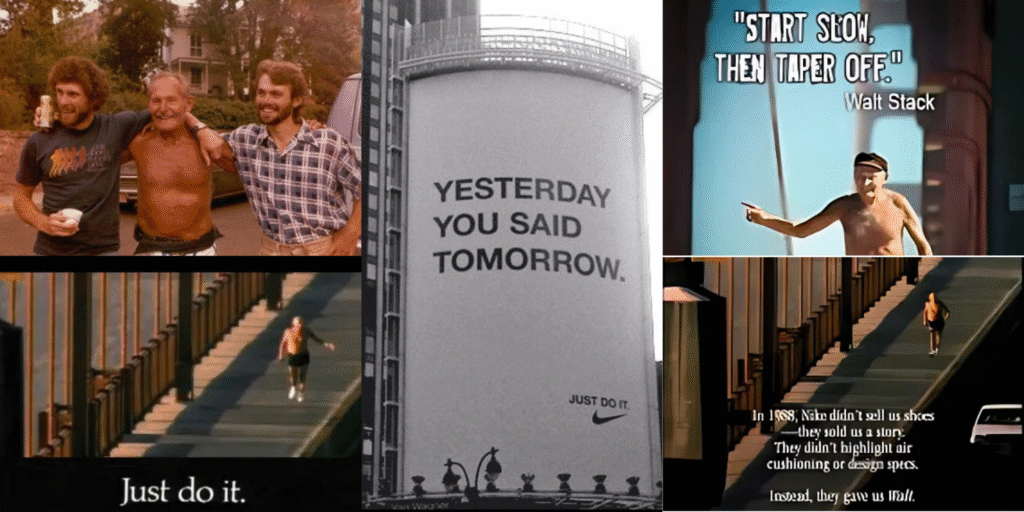
“Just Do It” is one of the most recognisable slogans ever—but did you know the 1988 campaign nearly failed before it truly took off? The brand’s fate hinged on an unlikely hero: an 80-year-old runner whose heartfelt sincerity made the world fall in love with the slogan all over again.
The lost ad
In 1988, Nike launched its “Just Do It” campaign to revive slumping sales—Wieden+Kennedy even doubled the ad budget to about $10 million. Their gamble featured Walt Stack, an octogenarian who jogged 17 miles daily across the Golden Gate Bridge. In the ad, he cracks jokes about the cold:
“I run 17 miles every morning. People ask me how I keep my teeth from chattering in the winter… I leave them in my locker.”
He delivers the line with cheerful defiance, underscoring a rare authenticity that cut through the noise of performance-driven advertising. The ad ends with a minimalist screen bearing just three words:
“Just Do It.”
This simplicity and humanity made the message instantly relatable and emotionally potent.
Why it worked?
Unlike later spots showcasing elite athletes like Michael Jordan or Serena Williams, this ad spoke to everyone. It reframed Nike not just as a performance brand, but as a companion to everyday effort—showing “Just Do It” wasn’t only for pros, but for anyone willing to push boundaries. As Jason Feifer wrote, it proved the slogan was “a formula for ANYONE to do amazing things”—a universal rallying cry rather than elite motivation.
The impact?
The effect was seismic. Following the launch, Nike’s North American shoe market share soared from 18% to 43% within a decade, and global sales rocketed from US $877 million to over $9 billion. The ad’s success justified the hefty $40 million spend, reshaping Nike’s brand identity and setting the stage for decades of storytelling rooted in emotional universality.
Legacy And Lessons
Today, “Just Do It” echoes through campaigns with cultural icons like Colin Kaepernick and Caitlin Clark—and it all began with Walt Stack’s humble run. The lesson is powerful: authenticity and relatability can outweigh star power. Nike later revisited this formula—ambush campaigns at the 2012 Olympics, aspirational athlete ads—and never forgot the importance of emotional accessibility.
Conclusion
The “lost” Walt Stack ad wasn’t just a marketing experiment—it was the emotional foundation upon which “Just Do It” became a global phenomenon. It showed that even an everyday hero can become extraordinary when they embody pure intention. That insight saved the slogan and shaped Nike’s global identity. It’s a case study in branding history and a reminder that great ideas can come from the most unexpected places.

